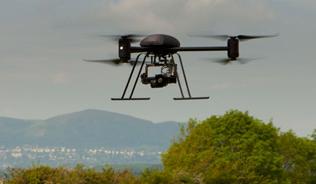environmental SCIENTIST | The Energy Trilemma | February 2013
In 1997, the Parties to the United Nations Framework Convention on Climate Change (UNFCCC) adopted the Kyoto Protocol, the international act binding nations around the world to reducing carbon emissions. The Kyoto Protocol entered into force on 16 February2005 when 184 Parties of the Convention ratified it. Those countries took on binding targets for the first commitment period (KP1) that ran from 2008 to 2012.
So what would happen if the UK failed to meet its targets? In the first instance, we must approach the question by looking at the European Union’s obligations in the UNFCCC’s Kyoto Protocol. This is because, in May of 2002, the EU as a whole ratified KP1, taking advantage of a scheme under the Protocol known as a ‘bubble’, in particular Article 4 of the Kyoto Protocol which allows Parties to form agreements to fulfil their Article 3 commitment jointly. This means that all EU member states in the ‘bubble’ will be considered compliant with their 2008–12 commitments if their total combined emissions were less than or equal to the assigned amount in Kyoto units, each of which is 1 tonne of CO2-equivalent (CO2e) emissions. This corresponds to a combined reduction target of 8 per cent by 2012.
This 8 per cent target was redistributed among the 15 ‘bubble’ states (also called the EU-15) – the countries that were EU members in 1997 when the Kyoto Protocol was adopted. These member states were Austria, Belgium, Denmark, Finland, France, Germany, Greece, Ireland, Italy, Luxembourg, the Netherlands, Portugal, Spain, Sweden and the United Kingdom of Great Britain and Northern Ireland. The redistribution is better known as the EU burden-sharing agreement, which sets different emissions limitation and reduction targets for each member state. It also effectively splits each national Kyoto target into an emissions budget for the Emissions Trading System (ETS) sectors and another emissions budget for the sectors not covered by the ETS (e.g. agriculture, buildings, transport, waste).
KP1: 2008–12
At this point in time, the EU is able to predict its own KP1 compliance with a strong level of confidence, as the latest EU reporting data includes greenhouse gas (GHG) emissions for the 2008–12 period. GHG emissions from the ETS have been verified up to 2012, plus the EU has early estimates from member states of their 2012 GHG emissions.
The EU-15 is on track to have done better than its 8 per cent reduction target. According to the European Environment Agency (EEA), total average emissions of the EU-15 in the 2008–12 period have declined by 12.2 per cent compared to base-year (1990) levels. Furthermore, planned use of Kyoto mechanisms1 – assigned amount units (AAUs), certified emissions reductions (CERs) and emissions reduction units (ERUs) – as well as estimated removal units (RMUs) from LULUCF (land use, land-use change and forestry) will have contributed to additional emissions reductions in the EU-15.
Based on the facts, the EU-15 will easily sail into the second commitment period with a KP1 overachievement,although ‘achievement’ is probably not the best description. Emissions reductions in the EU’s ETS (responsible for about half of the emissions profile) were primarily driven by the recession, which reduced demand for industrial products and lead to a decline in production and therefore CO2e emissions. The use of permitted project-based credits (CERs, ERUs) equating to 1,048 million tonnes CO2e emissions2 played a secondary role in the ETS sectors’ performance.
Another scenario
But let us consider the unlikely hypothetical scenario that that circumstances arise that render the EU ‘bubble’ defunct. The default position in this case then becomes the carbon performance of the 15 member states individually at the end of the first commitment period.In this scenario, what is the risk of the UK not meeting its individual binding target?
According to EEA reports, since 1990 the UK’s GHG emissions have fallen by 28 per cent. More so, EU-15 data shows that it is thanks to the UK’s performance that the EU is nearing the KP1 finish line in such good shape. The UK is on track for meeting its KP1 binding target on the basis of domestic reductions alone (despite the UK holding one of the lowest shares of renewable energy in 2011) as the UK Government reported to the European Commission this year that it had no intention of using Kyoto mechanisms for the commitment period.
Over or under?
However, the EEA warns that their analysis of the data can only be seen as a preliminary indication. This is because each Party’s 2012 annual reports will only be officially submitted to the UN on 15 April 2014, and then the UN’s experts will undertake a rigorous review of the EU-15’s and UK’s reports. This could take up to a year, and therefore the UK’s carbon inventory will likely only be finalised in 2015. In the end, despite promising data analysis from the EEA, it is the UN’s Compliance Committee that has the authority to decide whether the EU-15 ‘bubble’ or the UK is under or over its assigned carbon budget.
If the UK’s actual emissions exceed its assigned amount of Kyoto units for that commitment period, the Compliance Committee will give the UK 100 days to make up any shortfall in compliance by acquiring AAUs, CERs, ERUs or RMUs through emissions trading. This 100-day time frame is better known as the ‘true-up period’. At the end of the true-up period, if UK’s inventory reveals that there is a deficit in its assigned budget, the matter is handed over to the ‘enforcement branch’, which is responsible for determining whether a Party with a binding target is not in compliance with its emissions targets, the methodological and reporting requirements for GHG inventories, and the eligibility requirements under the mechanisms.
The enforcement procedure has several steps. After a preliminary examination, competent intergovernmental and non-governmental organisations may submit relevant factual and technical information to the enforcement branch as part of a consultation period. In this way, enforcement bases its deliberations on reports from external stakeholders but also the UN’s expert review teams and its subsidiary bodies (namely the body for scientific and technological advice and the body for implementation), Kyoto Protocol Parties, etc. The UK will have the opportunity to make formal written submissions and request a hearing where it can present its views and call on expert testimony.
The enforcement branch’s decision is final and binding, and the UK would only be able to appeal if it felt it has been denied due process. Should the enforcement branch rule against the UK, the UN Compliance Committee will then publicly declare the UK as non-compliant and will also make public the consequences to be applied.
So what happens next?
In 2011, when Canada’s environment minister, Peter Kent, confirmed that Canada was legally withdrawing from the Protocol he also crudely described the international agreement as having “very few teeth beyond international diplomatic censure”3.
Canada chose to withdraw because it had calculated that it would have to pay approximately CAN14 billion in buying emissions reductions from other Kyoto protocol countries to meet its target. However it could have also chosen to not meet its target and be declared noncompliant, because under the enforcement procedure, its carbon deficit (plus an additional penalty deduction of 30 per cent from its assigned amount) would have been carried over to the second commitment period.
Enforcement includes naming and shaming, having to submit a compliance action plan and suspension from making transfers through emissions trading until reinstated. But, as far as real emissions reductions are concerned, the UK would be given time until the end of the next true-up period (after 2020) to rebalance its carbon budget.
The international enforcement machinery in its current state is weak. The UK, should it not meet its targets, has a 100-day window to buy its way out of non-compliance through emissions trading. And unfortunately, based on CER prices today4 and the predicted AAU surplus of some EU member states5, these mechanisms represent a negligible financial fear factor and a disproportionately low carbon cost – not to mention a controversial means of achieving emissions reductions6. If after trading it still has a deficit, the UK can carry its responsibility over, rendering first-period actions inconsequential until the end of the second period.
KP2: 2013–20
There is another sticking point. The second commitment period is enshrined in the Doha Amendment. The Amendment was agreed at the UN Climate Change Conference in Doha, Qatar in December 2012 and comprises a number of amendments to the Kyoto Protocol. Importantly, it establishes a second commitment period with legally binding emissions targets for the years 2013–20.
However, only Bangladesh, Barbados, Mauritius, Monaco and the UAE have ratified the Doha Agreement, as of 27 December 20137, although the 28 member states of the EU and Iceland intend to jointly ratify the Amendment along with Australia, Liechtenstein, Norway and Switzerland. Nevertheless, those Parties will not be enough for the Amendment to take legal effect in international law – it needs 144 of the 192 Parties to the Kyoto Protocol7. This means that, for the time being, there exists a post-KP1 enforcement loophole.
Thinking with our science goggles on
Despite the international agreement being where it is, the EU and the UK, assuming the global leadership role in tackling climate change, must continue to support ideas like reason and empirical research as the basis for understanding the world.
The Intergovernmental Panel on Climate Change (IPCC, the UN’s scientific panel) says that “human influence on the climate system is clear. This is evident from the increasing greenhouse gas concentrations in the atmosphere, positive radiative forcing, observed warming, and understanding of the climate system9”. The IPCC’s fifth assessment report, to be published in full in October 2014, is expected to further underline the certainty that warming is anthropogenic.
The Parties to the UNFCCC will join the negotiation table in 2015 in Paris at the 21st Conference of the Parties, which should result in a make-or-break decision – the global community will choose to either support the scientific consensus or undermine it. 2015 will be the year of the ultimate push for a post-2020 binding agreement to prevent dangerous anthropogenic interference in the climate system, and successful adoption of a new agreement by global leaders will remind the laggards that science remains at the head of the negotiation table.
Paulina Poplawski-Stephens has worked in the climate change sector for six years in consulting, auditing and carbon credit procurement. She is currently based in Paris and works with ClientEarth’s Climate and Energy Team. She completed her legal studies in London and her environmental science studies at the University of Guelph, Canada.
This article was originally published in The Energy Trilemma, which is currently only available to IES Members. If you are not an IES member and want to read more of the articles from this journal click here for more information on joining the IES.
Sources
1. UNFCCC. The Mechanisms under the Kyoto Protocol: Emissions Trading, the Clean Development Mechanism and Joint Implementation. unfccc.int/kyoto_protocol/mechanisms/items/1673.php (Accessed: 7 January 2014).
2. European Environment Agency (EEA). Trends and projections in Europe 2013. Tracking progress towards Europe’s climate and energy targets until 2020. EEA Report. No.10/2013.
3. Carrington, D, Vaughan, A. (2011) Canada condemned at home and abroad for pulling out of the Kyoto treaty. The Guardian, 13 December. www.theguardian.com/environment/2011/dec/13/canada-condemned-kyoto-clima....
4. See, for example, www.eex.com/en/Market%20Data/Trading%20Data/Emission%20Rights/Certified%... (Accessed: 7 January 2014).
5. Ruthner, L., Johnson, M. Chatterjee, B., Lazarus, M., Fujiwara, N., Egenhofer, C., du Monceau, T., and Brohe, A. (2011) Study on the Integrity of the Clean Development Mechanism (CDM). Report ref: CLIMA.B.3/ETU/2010/0020r. AEA, Stockholm Environment Institute, Centre for European Policy Studies, CO2logic.ec.europa.eu/clima/policies/ets/linking/docs/final_report_en.pdf.
6. EEA Report (ibid). Czech Republic, Estonia, Lithuania, Slovenia, Latvia, Hungary, Romania and Bulgaria have reported surplus AAUs to the European Commission.
7. UNFCC (2012) Doha Amendment. www.unfccc.int/kyoto_protocol/doha_amendment/items/7362.php (Accessed: January 2014)
8. The Marrrakech Accords and the Marrakech Declaration. 2001. Annex: Procedures and mechanism relating to compliance under the Kyoto Protocol IX. PROCEDURES FOR THE ENVIRONMENT BRANCH www.unfccc.int/files/meetings/cop_11/application/pdf/cmp1_23_7_procedure...
9. IPCCC (2013) Climate Change 2013: The Physical Science Basis. Working Group I Contribution to the Fifth Assessment Report of the Intergovernmental Panel on Climate Change: Summary for Policymakers. IPCC, Geneva. http://templatelab.com/climatechange-WGI-AR5-SPM-brochure/.





